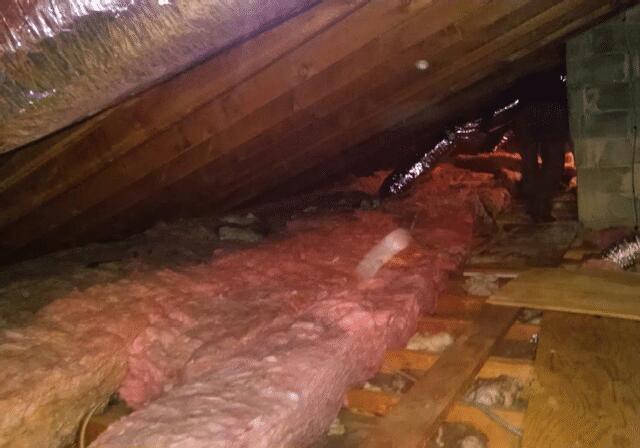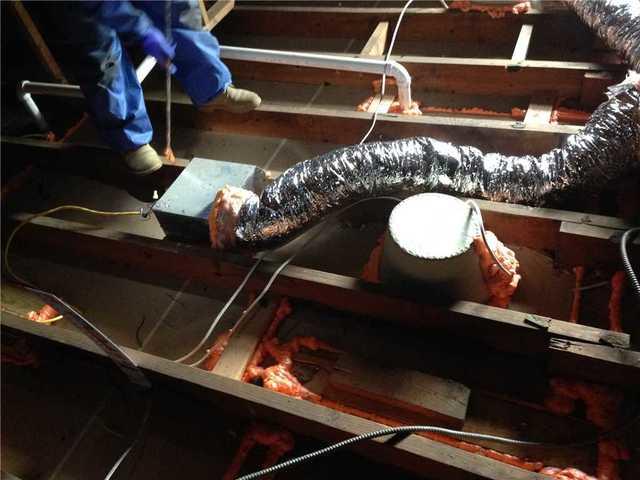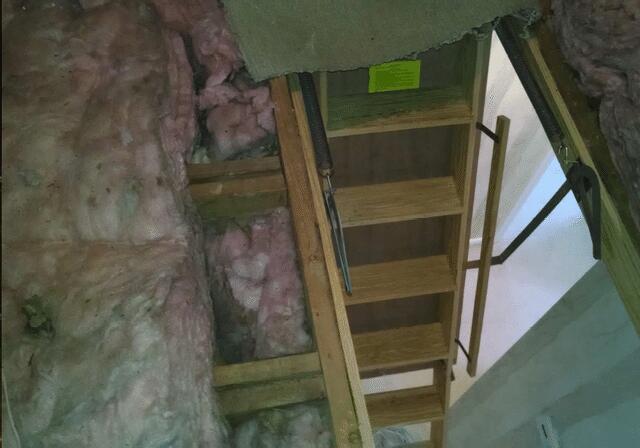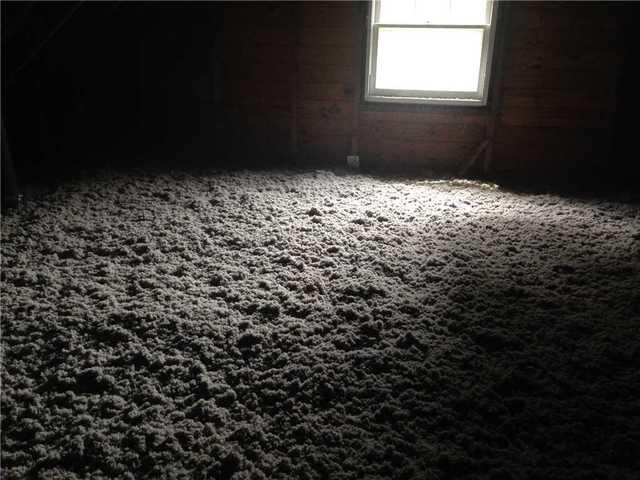
Removing Some Old Insulation
Our first step was to remove some of the existing insulation. This allowed us to locate all of the hidden sources of air leaks.

Air Sealing the Attic
Without air sealing, too much air flows between the living space and the attic causing a significant increase in energy costs. We sealed all of the gaps, cracks, holes and spaces where unwanted hot or cold air might escape using our expanding foam.

Extending a Bathroom Duct to the Exterior
When moist bathroom air is vented into an attic space rather than ducting it outside, it can result in wet insulation and wood. These conditions in a dark attic space can lead to mold growth! Our team extended this bathroom duct to vent through the roof.

Stair Hatch Cover
Even when it's closed up, the stair hatch leaks a LOT of air! Dr. Energy Saver's exclusive David Lewis Hatch Cover stops air leakage and insulates the access hole. The cover is made of lightweight 4" SilverGlo foam insulation and you simply move it aside when you need to get into the attic.

Blown Cellulose Insulation
After the attic has been air sealed, we can put in the rest of the insulation. TruSoft blown-in cellulose insulation is made of recycled newspaper, making it both affordable and good for the environment. Treated with a nontoxic borate solution, it has a class-1 fire safety rating and is resistant to mold and pests. An attic insulation upgrade such as this one can cut your heating & cooling costs by as much as 40%!

